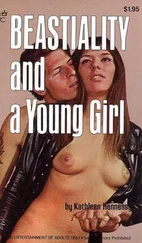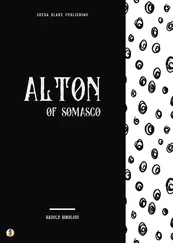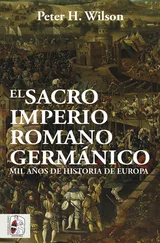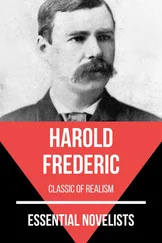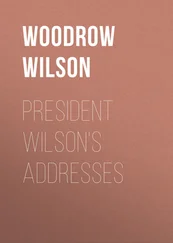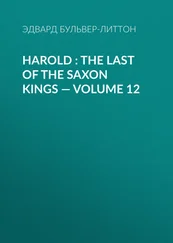1 ...8 9 10 12 13 14 ...23 Education was much in Herbert’s mind when, that summer, he embarked on a week’s tour on the family motor cycle with his son in the side-car. Ethel and Marjorie were at Guide camp. Harold, eight years old, had only recently been pronounced fit: the excitement was intense. Father and son began with a few days’ sightseeing in the capital. Using a bed and breakfast in Russell Square as their base, they ventured into London’s political heartland. From an ABC café next to Westminster Bridge, they stared up at Big Ben and the Houses of Parliament through a slot-machine telescope. Then they gazed at the soap-box speakers at Hyde Park Corner, and through the railings at Buckingham Palace, before riding up Downing Street to the prime minister’s residence. 52The short cul-de-sac, overshadowed by government buildings, was readily accessible to the public. Nobody stopped them as Harold, flat-capped and skinny from his recent illness, stood gravely on Ramsay MacDonald’s doorstep, as Herbert lowered his folding Brownie camera to snap one of the most famous photographs in British political history. The picture was pasted into the family album, where it remained until Herbert handed it to the press on the day Harold became Leader of the Labour Party.
The trip also took in tours of Parliament, Westminster Abbey, the Tower and St Paul’s. Finally Herbert and Harold rode to the Wembley Exhibition where they met up with Ethel, in full regalia, accompanied by a party of Guides from camp. Then father and son returned to Milnsbridge via Runnymede, Oxford, Rugby and Stratford.
The visit was a memorable event in the life of a schoolboy who had never been to London before. When Harold first took his seat as an MP in 1945 Herbert, accompanying him to the Commons, is supposed to have remarked: ‘We’ve been here before, Harold,’ and his son is said to have replied: ‘Yes. You brought me then. Now I’m bringing you.’ 53Much attention has been directed at the famous photo, which seemed to contain a prophecy, and also to sum up Harold’s political approach. ‘Harold was ruined by the bloody picture of him outside No. 10,’ says Ian Mikardo, who watched his later ascent at close quarters. ‘He had to make it come true.’ 54No doubt the trip, and the photo, had their effect. But many children are photographed outside famous buildings, without necessarily seeking to live in them.
A much more important journey than the 1924 visit to London took place two years later when, at the age of ten, Harold accompanied his mother to Western Australia, to visit Grandfather Seddon – believed to be seriously ill – and Uncle Harold. It is a measure of Ethel’s own will and independent spirit that, with no experience of foreign travel, she should have undertaken such a voyage without her husband and in the company of her young son. It is also an indication of the Wilsons’ continuing prosperity, soon to end, that they could afford the fare. For Harold, it was an extraordinary experience. It opened his eyes to ways of life of which he had previously known nothing. It gave him a first-hand glimpse of the pomp and glamour of politics. It also separated him, for a further protracted spell, from his class-mates.
Herbert had by now graduated from a motor cycle to a family Austin 7, and in May 1926, a few days after Britain had been convulsed by the General Strike, he drove Ethel and Harold to London, where they embarked on the RMS Esperance Bay. The young boy was entranced by the long, majestic sea journey, through the Mediterranean and Suez Canal, with stops at Port Said and Colombo, before arriving at Perth. They found the extended Seddon family living on a small farm in the bush, a dozen miles from the city. Harold was a source of curiosity to his cousins, and of delight to his grandfather, whom he had not previously met. He was allowed to help them with the farm, and there were pleasurably frightening encounters with poisonous snakes and a tarantula. 55Two-thirds of a century later, a Seddon relative still has fond memories of walking proudly to school down a dusty track, hand in hand with her older English cousin Harold. ‘I think you were 10 Harold & I was seven & I know it was just over a mile walk each way,’ the ex-Prime Minister’s cousin Joan wrote from Western Australia in March 1992. ‘… I have always remembered this as I was very proud to have my bigger and older cousin from England accompany me to school, & as I was not very keen on school at that time I thought it was terrific of Harold to volunteer to go with me & do his work.’ 56
The most exciting member of the Australian Seddon tribe was undoubtedly Uncle Harold, upon whom Ethel – in common with all resident Seddons of three generations – lavished admiring attention. Harold Seddon was in his prime as a state politician when his English sister and nephew made their visit, though by this time he was no radical. In 1917 he had left the Labour Party to join the pro-conscription National Labour Party. It was as a National, following Labour’s defeat, that he had been appointed by the state government in 1922 to the Legislative Council of Western Australia. 57It was scarcely an elevated position (the nearest British equivalent would have been an alderman, like Uncle Thewlis, in a major local authority), but it was a source of great pride and wonder in the Seddon family. When Harold Wilson became President of the Board of Trade, and Harold Seddon (supporting Robert Menzies’s Liberal Party) was President of the Legislative Council in Western Australia, Ethel remarked to a friend: ‘My brother is an Honourable and my son is a Right Honourable. What more could a woman ask?’ 58That was not quite the end of it – in the 1950s, Harold Seddon’s long service was duly acknowledged with the award of a knighthood.
One of Harold Wilson’s Australian experiences was to attend a session of the upper house of the State Legislature with his reverential relatives, and observe ‘Uncle Harold in all his dignity’. 59On the ocean voyage back to England, he told his mother: ‘I am going to be a Member of Parliament when I grow up. I am going to be Prime Minister.’ 60This, at any rate, was the story she related. Perhaps it was exaggerated, or embroidered, the way doting mothers do. What is interesting about the remark (which many parents might have instantly forgotten as the kind of silly statement children often make) is that she remembered and treasured it. Parting from her adored brother Harold, she was glad enough to take comfort in the thought of her son Harold, one day, stepping into his shoes.
Back at New Street Council School, the children were more impressed by Harold’s skill, acquired from a ship’s steward, at making elaborate paper boats. 61Yet it was hard to fit back in, after such a long absence. New friendships had been made, new alliances forged. Harold was excluded from games and ignored. In self-protection, and to combat loneliness, he turned himself into a celebrity. Indulging his attention-seeking impulse, teachers allowed him to give talks to his school-mates on the subject of his adventure. The Wilson lecture, illustrated by the display of Australian souvenirs, lasted two hours, and was delivered in two parts, to every class in the school. 62
According to Ainley, Harold’s marathon performances alerted the staff to his potential. 63Whether they did much to improve his popularity, we may doubt. One effect was certainly to encourage his own sense of uniqueness, of having a fund of special knowledge, not given to others. Following the voyage, Harold inundated children’s magazines with articles on Australian topics. These were marked more by an interest in technological achievement than by literary or descriptive qualities. (‘A few months ago I paid a visit to Mundaring Weir,’ began one. ‘When I arrived there I was awestruck with the terrific volume of water and the massive concrete dam that held it in check.’ 64) All were politely rejected. What they do show is how big an impression the visit had made on him. It is possible to believe Wilson’s later claim that his sympathy for the Commonwealth idea began with his early experience in Australia. 65
Читать дальше


